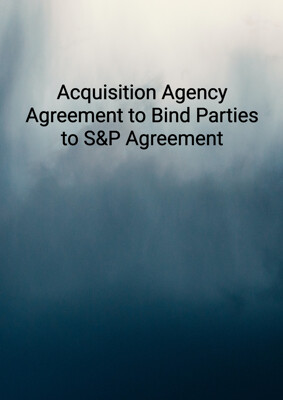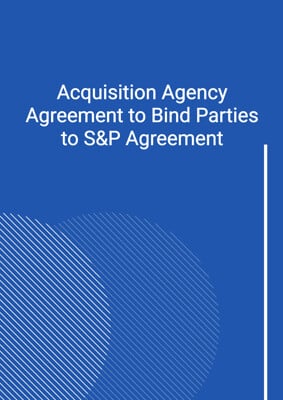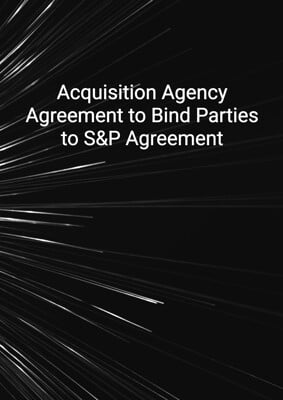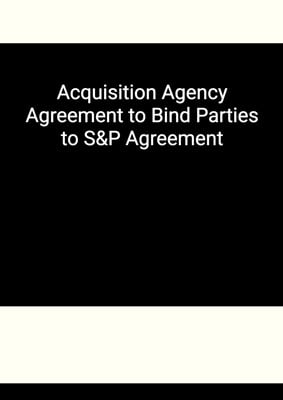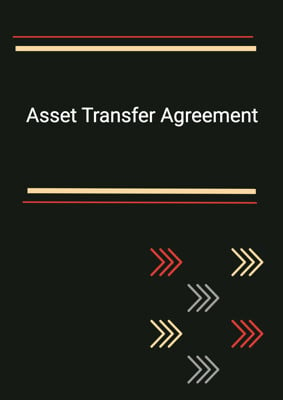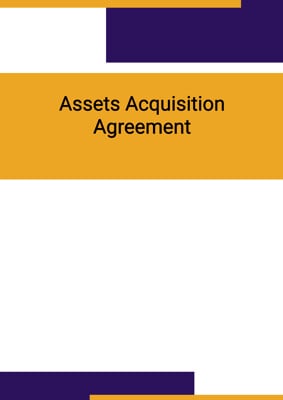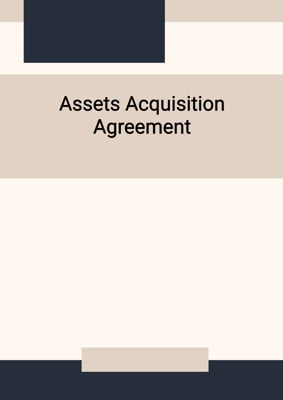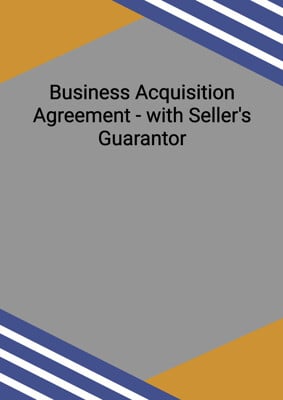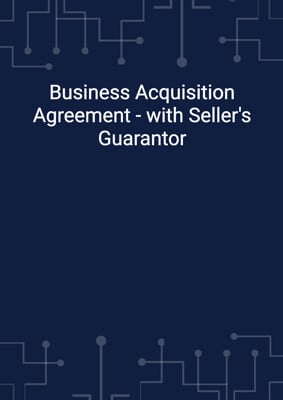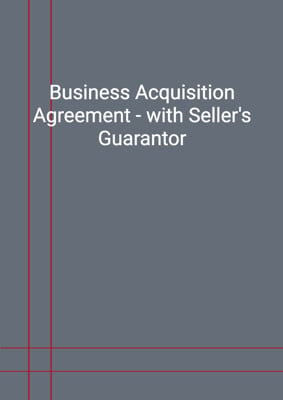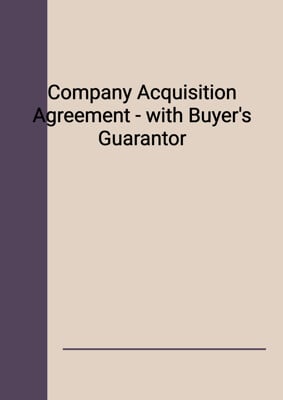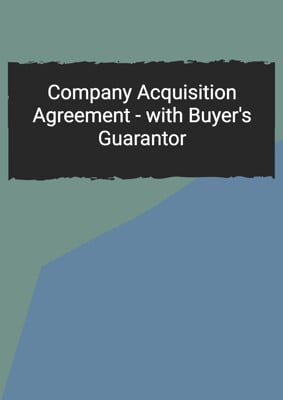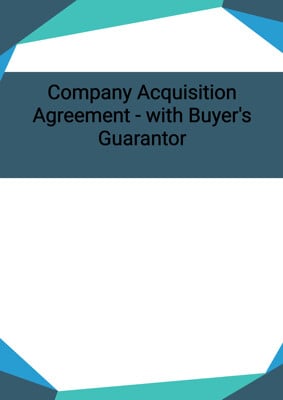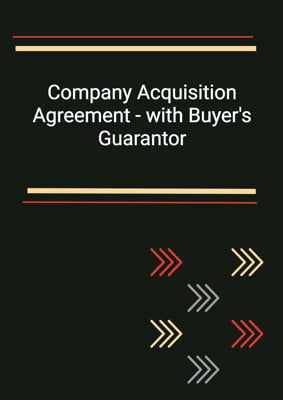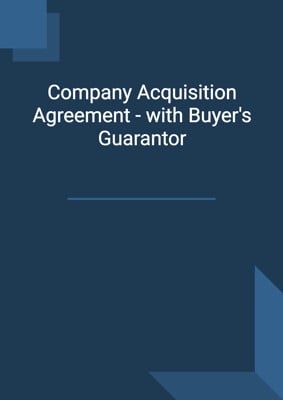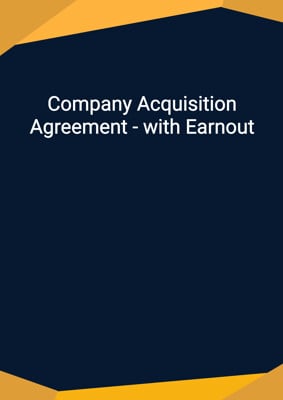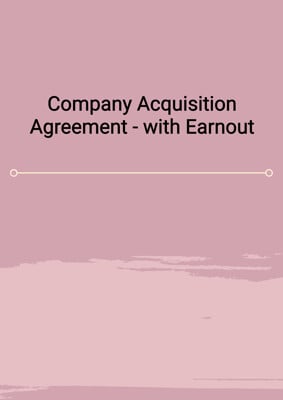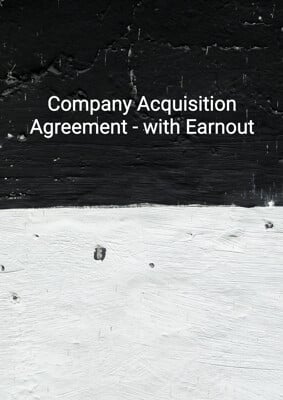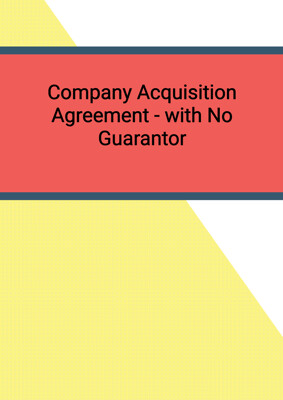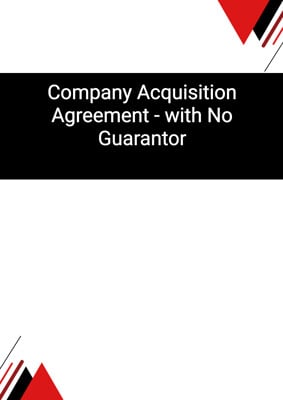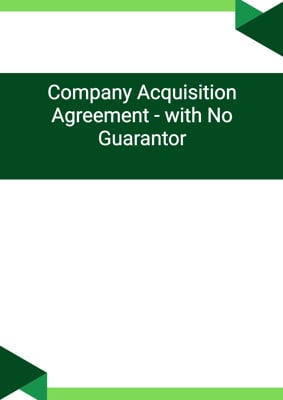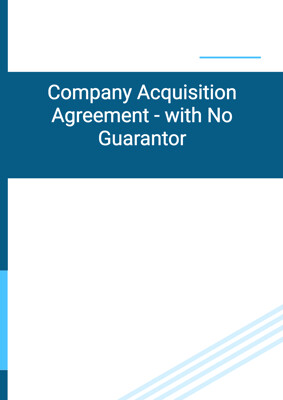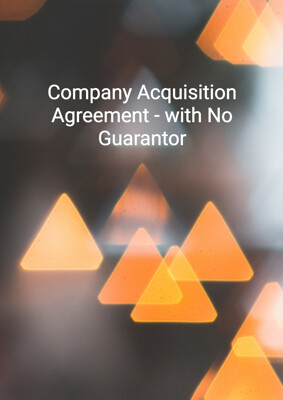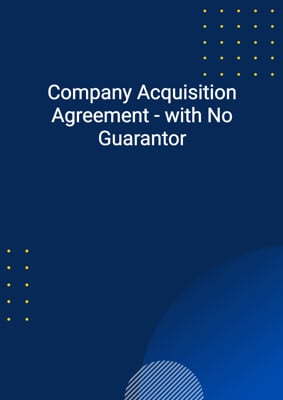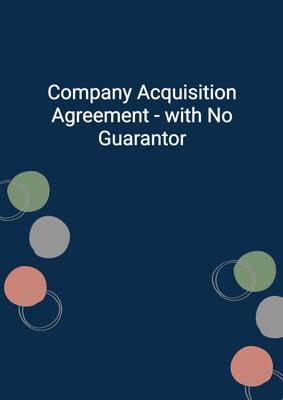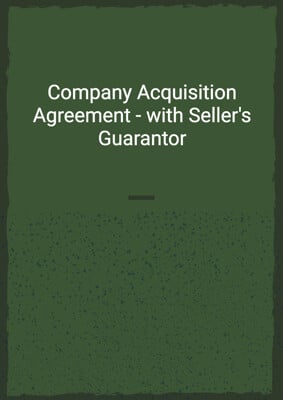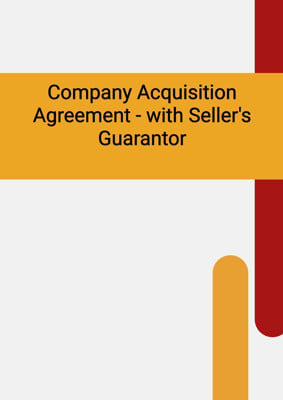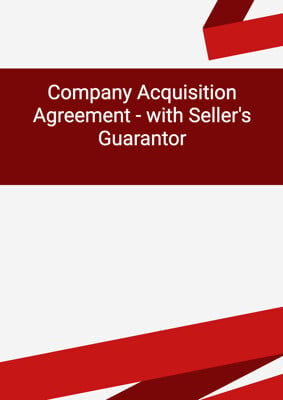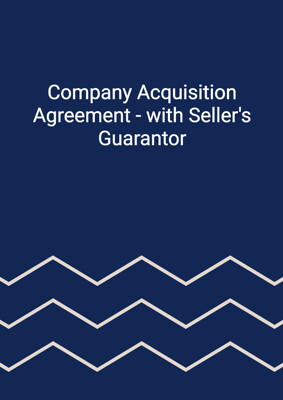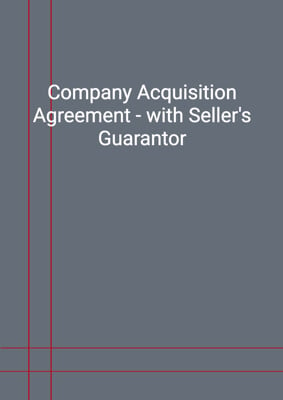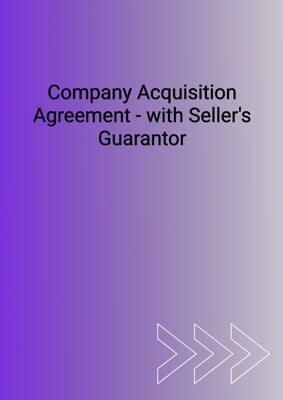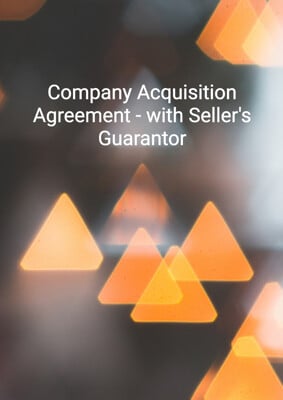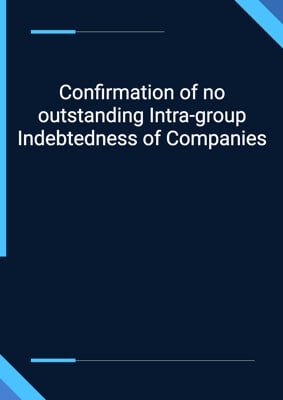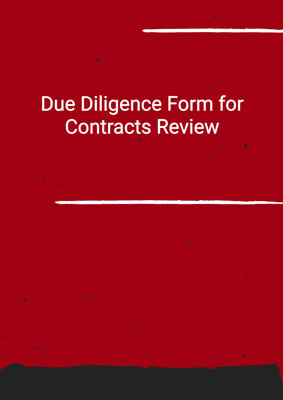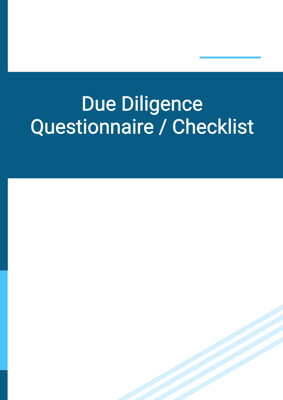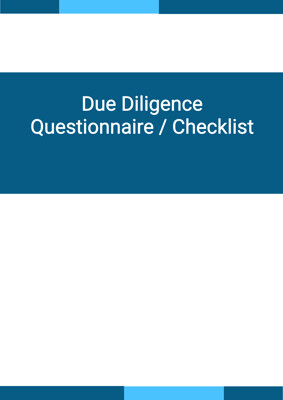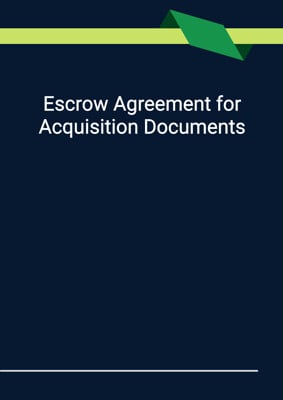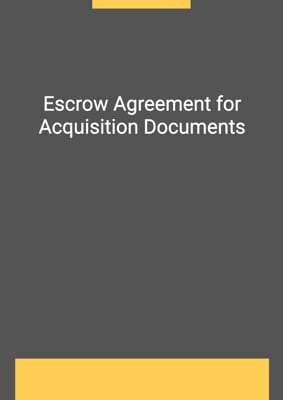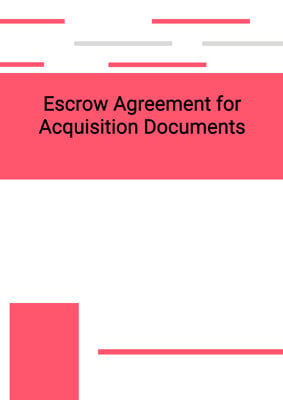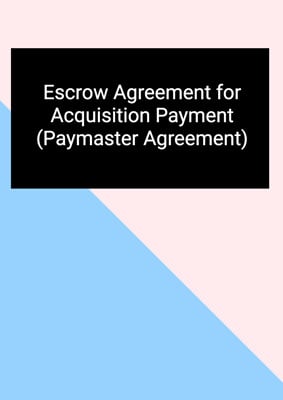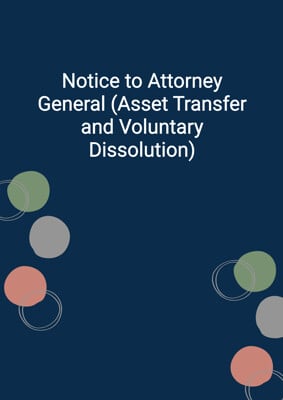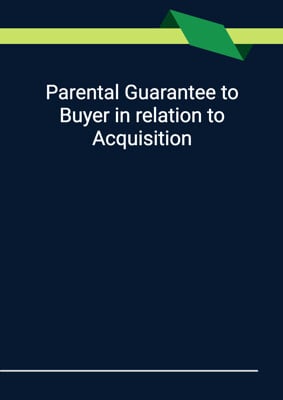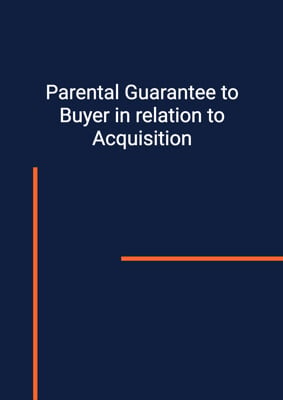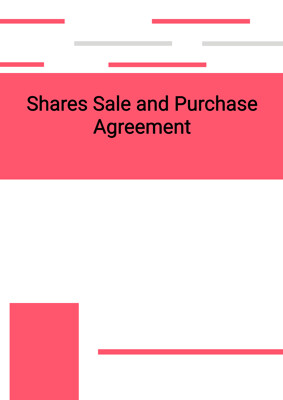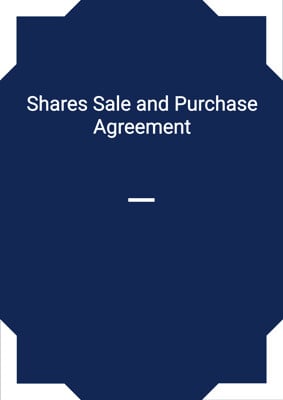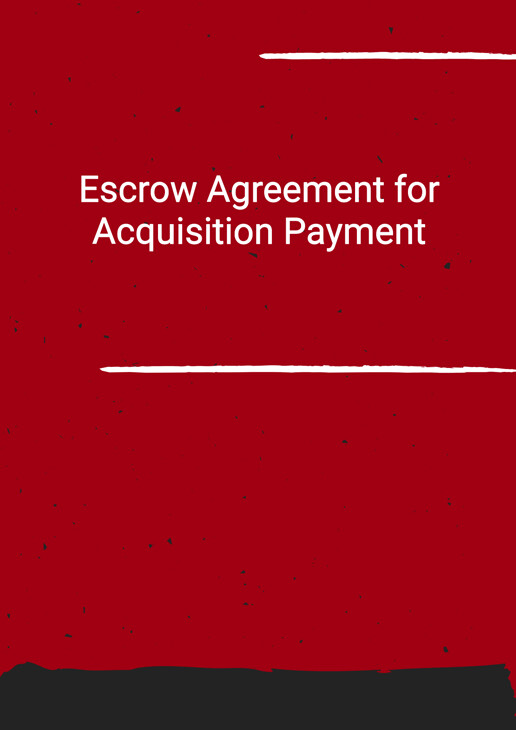
Escrow Agreement for Acquisition Payment
Seller
In a Sale and Purchase Agreement, the Seller/Buyer depositing the funds in an account in the name of independent Escrow Agents to retain deposit /part of the consideration pending completion / warranty claim / regulatory approval. This is drafted in favour of the Seller.
How to Tailor the Document for Your Need?
01
Create Document
Fill in the details of the parties. You can click the "Fill with Member’s Information" button to complete it with information saved to your account.
02
Fill Information
Please fill in any additional information by following the step-by-step guide on the left hand side of the preview document and click the "Next" button.
03
Get Document
When you are done, click the "Get Document" button and you can download the document in Word or PDF format.
04
Review Document
The document should be signed by the authorised signatory (or directors of a company) and witnessed to complete the formality.
Document Preview
Document Description
The Escrow Agreement for Acquisition Payment is a crucial document that outlines the terms and conditions for holding and releasing funds during an acquisition. This agreement is entered into between three parties: the buyer, the seller, and the escrow agent. The document begins with a brief introduction, stating that it is referred to in the Sale and Purchase Agreement. It then proceeds to define various terms used throughout the agreement.
Section 2 of the document focuses on the deposit of the escrow amount. It states that on the payment date, the buyer is required to deposit the escrow amount into the designated escrow account. The escrow agent is responsible for holding the funds in trust for the seller and ensuring that they are used in accordance with the agreement.
Section 3 outlines the treatment of the escrow amount during the escrow period. It specifies that the escrow agent cannot release any of the funds unless provided for in the agreement. Any bank charges or interest generated from the escrow account are to be retained in the account.
Section 4, if applicable, discusses the investment of the escrow amount. It states that the escrow agent will invest the funds in short-term money market deposits at the best interest rate obtainable. The buyer, seller, and escrow agent may agree to vary or continue these investments.
Section 5 details the payment of the escrow amount based on different scenarios. It covers situations such as completion net asset certificate, claims under warranties or tax indemnity/covenant, deposit pending completion certificate, and regulatory approval. The specific steps and requirements for each scenario are clearly outlined.
Section 6 addresses the liability of the escrow agent. It states that the escrow agent is not liable unless there is a breach of the agreement or fraud, negligence, or wilful default on their part. The buyer and seller are required to indemnify and hold the escrow agent harmless from any liability arising from the operation of the escrow account.
Section 7 briefly mentions the fees and expenses of the escrow agent, while Section 8 provides the payment details for all transactions related to the escrow account.
Section 9 states that any variation of the agreement must be in writing and signed by all parties. Section 10 covers notices and service, specifying the methods and timelines for delivering notices between the parties.
Section 11 states that the agreement may be entered into in multiple counterparts, and Section 12 specifies the governing law and jurisdiction. Finally, Section 13 clarifies that no third party has the right to enforce the terms of the agreement.
In conclusion, the Escrow Agreement for Acquisition Payment is a comprehensive document that outlines the procedures and responsibilities for holding and releasing funds during an acquisition. It covers various scenarios and provides clear instructions for each situation.
How to use this document?
1. Deposit of Escrow Amount: On the payment date, the buyer must deposit the escrow amount into the designated escrow account.
2. Treatment during Escrow Period: The escrow agent will hold the funds in trust and cannot release them unless specified in the agreement. Any bank charges or interest generated will be retained in the account.
3. Investment (if applicable): The escrow agent will invest the escrow amount in short-term money market deposits, unless otherwise agreed upon.
4. Payment of Escrow Amount: Depending on the scenario (completion net asset certificate, claims under warranties or tax indemnity/covenant, deposit pending completion certificate, or regulatory approval), specific steps must be followed to release the funds.
5. Liability of the Escrow Agent: The escrow agent is not liable unless there is a breach of the agreement or fraud, negligence, or wilful default on their part. The buyer and seller are responsible for indemnifying the escrow agent.
6. Fees and Expenses: The agreement briefly mentions the fees and expenses of the escrow agent.
7. Payment Details: All payments related to the escrow account must be made to the specified accounts.
8. Variation: Any changes to the agreement must be in writing and signed by all parties.
9. Notices and Service: Notices must be in writing and can be delivered by hand, email, fax, or post. Specific timelines for delivery are provided.
10. Counterparts: The agreement may be entered into in multiple counterparts.
11. Governing Law and Jurisdiction: The agreement is governed by the specified jurisdiction.
12. No Rights for Third Parties: Only the parties to the agreement have the right to enforce its terms.
Follow these steps to ensure proper use and implementation of the Escrow Agreement for Acquisition Payment.
Not the right document?
Don’t worry, we have thousands of documents for you to choose from:
